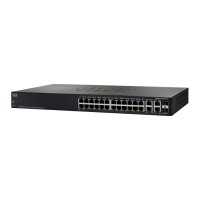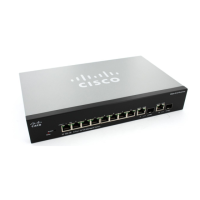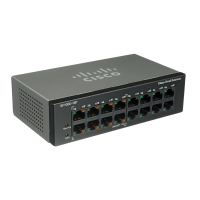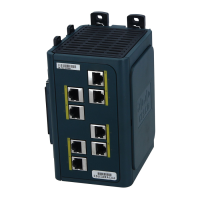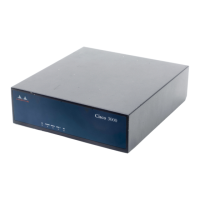IP Configuration
IPv6 Management and Interfaces
312 Cisco Small Business 200, 300 and 500 Series Managed Switch Administration Guide (Internal Version)
17
• Sequence Number—Specifies the place of the prefix within the prefix list.
Select one of the following options:
- Auto Numbering—Puts the new IPV6 prefix after the last entry of the
prefix list. The sequence number equals the last sequence number plus
5. If the list is empty the first prefix-list entry is assigned the number 5
and subsequent prefix list entries increment by 5.
- User Defined—Puts the new IPV6 prefix into the place specified by the
parameter. If an entry with the number exists, it is replaced by the new
one.
• Rule Type—Enter the rule for the prefix list:
- Permit—Permits networks that matches the condition.
- Deny—Denies networks that matches the condition.
- Description—Text.
• IPv6 Prefix—IP route prefix.
• Prefix Length—IP route prefix length.
• Greater Than—Minimum prefix length to be used for matching. Select one
of the following options:
- No Limit—No minimum prefix length to be used for matching.
- User Defined—Minimum prefix length to be matched.
• Lower Than—Maximum prefix length to be used for matching. Select one of
the following options:
- No Limit—No maximum prefix length to be used for matching.
- User Defined—Maximum prefix length to be matched.
• Description—Enter a description of the prefix list.
STEP 4 Click Apply to save the configuration to the Running Configuration file.
Viewing IPv6 Route Tables
The IPv6 Forwarding Table contains the various routes that have been configured.
One of these routes is a default route (IPv6 address:0) that uses the default router
selected from the IPv6 Default Router List to send packets to destination devices
that are not in the same IPv6 subnet as the device. In addition to the default route,
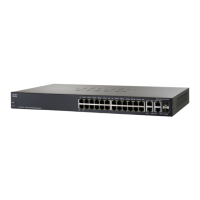
